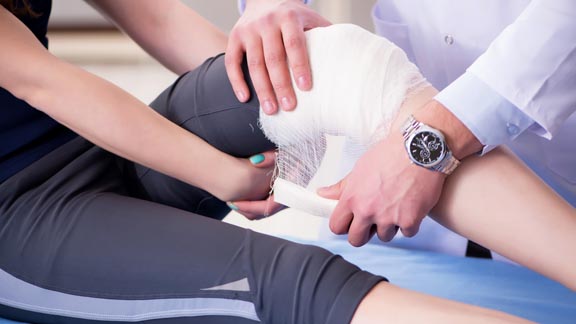
Pain can affect every sports person’s next performance, and not to mention it can be very debilitating. The most common sports injuries that also cause pain to a lot of athletes include ankle sprain, hamstring strain, groin pull, shin splints, tennis elbow, and knee injury. Sudden stretches and overusing muscles can tear tendons, ligaments, and muscle fibers.
Whether a player is into high school football, college basketball, volleyball, or martial arts, sustaining injuries may cause acute or chronic pain that would require prompt medical attention for proper pain management and faster recovery. But, how do you manage pain using conservative and proven methods aside from over-the-counter or prescribed pain medications?
Below are some helpful tips to help you manage pain after a sports injury:
Find an Effective Alternative Pain Treatment
Athletes are usually bombarded with plenty of non-steroidal anti-inflammatory drugs (NSAIDs) and opioids to treat pain. However, these traditional medications can cause tons of side effects, such as stomach ulcers, dizziness, nausea and vomiting, bleeding tendencies, and cardiovascular and renal problems.
It’s a good thing that cannabidiol (CBD) is now available. CBD is an effective alternative treatment over NSAIDs and opioids. Many athletes are now turning to CBD to reduce the pain and inflammation brought about by sports injuries and boosting their performance.
Here are the good-to-know facts about CBD as an effective alternative treatment to traditional pain medications:
In a study, it shows that CBD serves as a neuroprotectant. That’s why it’s suitable for football players and other contact sports with high risk for sustaining concussions and traumatic encephalopathy.
CBD can help relieve pain and promote relaxation either internally, through sublingual route via CBD tincture or CBD oil, or topically, such as patches, body oils, balms, and bath soaks.
CBD helps relieve muscle soreness and spasm. You use CBD creams to ease the pain of sprain or strain, so it helps if you have one when training or during any competition because this CBD product is easy to apply.
Apply the Modified RICE Therapy
In 1978, Dr. Gabe Mirkin wrote the book entitled The Sportsmedicine Book, where he introduced the acronym RICE (Rest, Ice, Compression, and Elevation) that many physical therapists, physicians, coaches, and the public have adapted for many years.
Dr. Mirkin has stated that simply putting ice, complete rest, use of NSAIDS, immune suppressants, steroids, and anything that blocks the response of the immune system to injury may delay healing. Further, ice application can reduce speed, strength, coordination, and endurance, which significantly affect an athlete’s performance.
Here are the latest recommendations of Dr. Gabe Mirkin:
R for Restrict Activity: If you’re injured, better take a rest on training or exercising until you’re healed.
I for Ice: Because ice application is an effective method to reduce pain, you can still apply ice. However, to avoid the delay in the healing process, after 10 minutes, you should remove it. If you need to apply again, wait for 20 minutes, and only limit applying ice one or twice.
There’s no need to apply ice if more than six hours have already passed after the injury.
C or Compression: If the sports injury is limited to muscles or soft tissues, compression (elastic bandage) should only be applied by a doctor, coach, or trainer to help reduce swelling.
E or Elevate: If possible, elevate the injured area to prevent swelling. However, before elevating any extremity, a qualified person should assess if the condition won’t be aggravated with movement.
Avoid Self-medication
Drug abuse, most especially to pain killers, is rampant in the sports world, and you don’t want to end up getting addicted to NSAIDs and other pain medications. That’s why it’s always advisable to consult a doctor when it comes to proper dosing.
Physical Therapy
Consider physical therapy for acute or chronic back pain brought about by sports injuries. Physical therapists usually focus on relieving pain with passive treatment modalities, such as:
Heat or ice packs
Iontophoresis (a device that use electricity in small voltage to treat pain)
A TENS unit (a battery-operated device used to treat pain by delivering electrical impulses via electrodes to a person’s skin)
Low impact aerobic exercises (running, walking, stretching)
Conclusion
Pain management after a sports injury doesn’t only involve NSAIDs and opioid-based medications. Even healthcare professionals use conservative and alternative treatments to address pain. Implementing the modified RICE therapy is also advisable so that the performance of athletes is not affected while ensuring faster healing of sports injuries.




